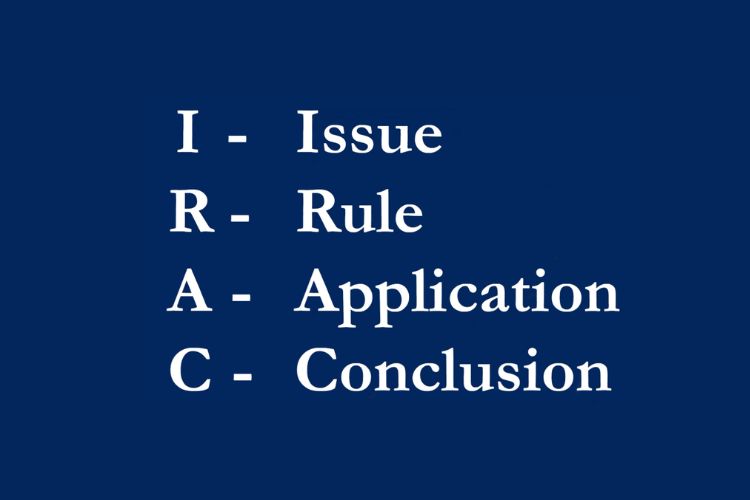The IRAC method is a popular and familiar approach used by law students and legal professionals. IRAC stands for Issue, Rule, Application, and Conclusion. Some explanations may slightly differ, with IRAC being interpreted as Issue, Rule, Argumentation, and Conclusion. This method is used to organize legal reasoning and basic legal thinking, helping to develop clear and logical arguments. IRAC is also a method for writing and speaking about the law in a way that is easily understood by both the writer and the reader.
– While IRAC is a common method in the legal field, it is not necessary to strictly adhere to it. Depending on the case or question, adjustments can be made to provide the most logical answer and argumentation. For example, if the question involves summarizing a case, a reasonable structure could be: Case background (including the legal issue addressed in the case) – Argumentation of Country A – Argumentation of Country B – Court’s conclusion. Within each section, there can be an IRAC structure.
– An article, essay, or thesis may have more than one IRAC within it. If the issue is simple, only one IRAC structure may be needed. However, if the issue is complex and involves multiple legal issues, multiple IRAC structures may be necessary to address each legal issue.
– Regardless of the method used, including IRAC, practice is essential to master these skills. Writing extensively, speaking extensively, and engaging in legal argumentation will gradually refine and improve our skills in legal writing, legal speaking, and legal reasoning.
1. Issue
The first step in legal thinking and reasoning is to identify the legal issue (legal issues/questions of law) based on the evidence and facts of the case. A case may have one or several legal issues. To identify the legal issue, it is necessary to have sufficient legal knowledge to “recognize” the legal traces within the evidence and facts. At least, we need to understand which branch of law or regulation governs the case we are dealing with. In other words, what legal relationship exists in the case.
For example, if Country A installs an oil rig in a maritime area that Country B claims as its own, and both countries send military vessels to confront each other around the location of the oil rig, the legal branches involved may be international maritime law and the use of force. The legal issues here are whether Country A’s actions violate Country B’s rights in maritime area X and whether the actions of both countries amount to threatening or using force. Once the legal issue is identified, the next step is to find the specific rule.
2. Rule
Once the legal issue (legal relationship) of the case has been identified, it is necessary to review and study the relevant provisions of the applicable branch of law to find the specific rule that applies to the case. All sources of law in the relevant branch should be reviewed, including treaties, customs, general principles, and related case law. In the above example, the relevant branch of law to review would be international maritime law. With the evidence that the disputed maritime area X is located 120 and 180 nautical miles away from the coast of Country A and B, we can narrow down the relevant provisions to those related to exclusive economic zones and continental shelves, specifically Article 74(3) and 83(3) of UNCLOS regarding obligations in overlapping areas that have not been delimited between the two countries. Proper review may reveal a relevant case, such as the Suriname vs. Guyana case.

3. Application
Once the applicable rule has been identified, it needs to be applied to the actual case. The Application section requires explaining the identified relevant rule, combining it with the evidence and facts of the case to reach a conclusion. This conclusion is not the same as the Conclusion section below but answers questions like: Is there evidence to show that all the conditions in Rule M have been met? For example, are there sufficient evidence to demonstrate that Country X’s self-defense actions meet the requirements of necessity and proportionality? Are there enough evidence to prove that Mr. A’s actions satisfy all the elements of the crime of smuggling?
The explanation in the Application section may include (1) interpretation based on the Vienna Convention on the Law of Treaties, (2) reference to relevant case law (if any), highlighting similarities and differences between the case in the precedent and the current case, evaluating whether the court’s conclusion and reasoning in that case should be applied similarly in this case, and (3) explanations from scholars, comparing different perspectives.
4. Conclusion
The Conclusion section usually provides a summary answer for the above sections, particularly the Application section. Importantly, no new information or arguments should be introduced.



